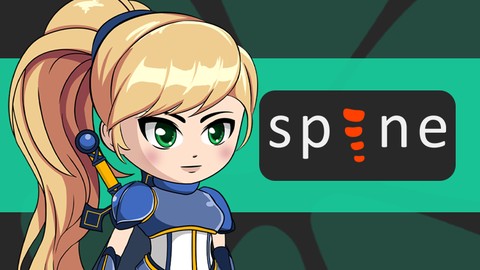Free Download Transform Ai Art Into Game-Ready Animations Using Spine. If you’re excited about bringing your AI-generated artwork to life in video games, learning how to convert AI art into game-ready animations using Spine is a game-changer. This course offers in-depth tutorials and tools to effectively animate 2D characters and integrate them seamlessly into your gaming projects, boosting both the visual appeal and functionality of your games. Get ready to make your creative visions playable with practical skills that will elevate your game development to new heights.
What is Transform Ai Art Into Game-Ready Animations Using Spine?
Transforming AI art into game-ready animations using Spine involves converting static AI-generated images into dynamic, animated sequences ideal for video games. By leveraging Spine’s sophisticated tools, developers can animate 2D characters efficiently, employing bone rigging, meshing, and advanced timelines to bring vivid movements and expressions to life. This process not only speeds up game development but also enhances the visual appeal and interactivity of game characters, making them more engaging for players. Ideal for both indie developers and professional studios, this technique is pivotal in modern game design, ensuring a seamless integration of art and technology.
Overview of Transform Ai Art Into Game-Ready Animations Using Spine
If you’re looking to bring your AI-created artwork to life in the gaming world, Spine offers a robust toolkit for transforming static images into dynamic, game-ready animations. Spine specializes in creating detailed skeletal animations, which allow artists and developers to produce more lifelike and responsive movements within their games. With features like inverse kinematics, meshes, and realistic bending of parts, Spine ensures your animations are not only smooth but also incredibly efficient, optimizing gameplay performance. Whether you’re working on a complex RPG or a simple mobile game, Spine makes it straightforward to integrate your AI art seamlessly.
In summary, Spine is the go-to tool for animating AI-generated artwork effectively, ensuring your characters move naturally and interactively in their digital environments.
Features of Transform Ai Art Into Game-Ready Animations Using Spine
When it comes to transforming AI art into game-ready animations, Spine software stands out due to its powerful features and seamless integration capabilities. Here’s a clear breakdown of how Spine takes your AI-created artwork and turns it into dynamic animations fit for gaming:
- Efficient Rigging Tools: Spine provides intuitive tools that allow you to quickly rig your AI art. You can assign bones and create skeletons that bring your characters to life.
- Advanced Animation Controls: With Spine, animating your AI art becomes straightforward. The software includes inverse kinematics, meshes, and weights to facilitate subtle movements and realistic animations.
- Seamless Integration: Spine animations are easily exported and compatible with most major game engines like Unity, Unreal Engine, and many others, ensuring a smooth workflow from art to game.
- Real-Time Preview: Test and edit your animations in real time within Spine without the need to switch between different programs. This accelerates the development process and enhances your creative workflow.
- Lightweight Runtime: The Spine runtime is lightweight, which ensures that animations do not overly burden the game’s performance, maintaining smooth, high-quality gameplay.
- Customizable Export Options: Spine gives you control over your animation exports, allowing adjustments in resolution, format, and other parameters to meet specific game requirements.
By integrating with Spine, your transition from AI-generated art to engaging, game-ready animations is not only possible but also efficient and effective. This integration ensures that the creative vision is preserved while making the animations practical for real-world gaming applications.
